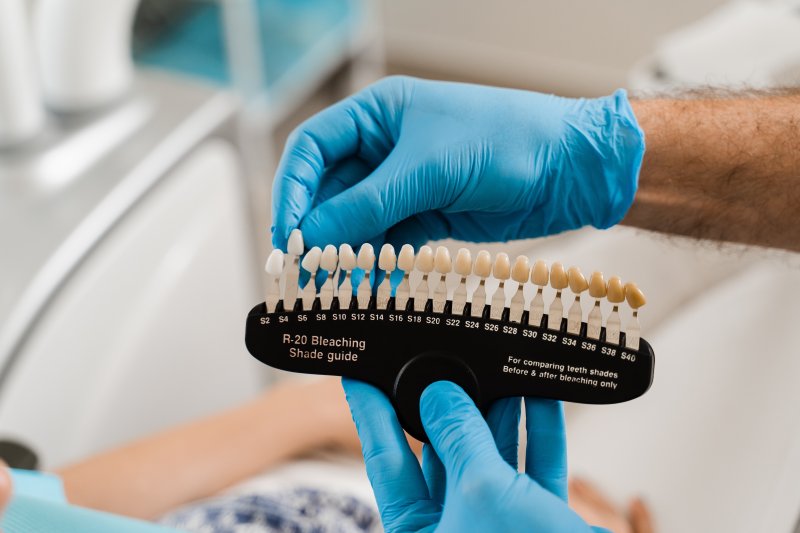
You just learned you need a customized dental crown to fix your broken or decayed tooth. While it doesn’t sound like an ideal situation, it seems to be a better option than removing the structure and attempting to replace it with a costlier artificial tooth. But how will your dentist get your new crown to match so that it doesn’t stick out like a sore thumb? Discover the secret professionals use to help patients see a healthier, more aesthetically pleasing smile.
What is a Shade Guide?
While traditional amalgam was once considered the only viable solution for creating customized restorations like dental crowns, advancements in dentistry have led to the development of natural-looking materials. Whether it is porcelain, ceramic, or another tooth-colored option, dentists turn to one of the most trustworthy instruments – a shade guide.
Complete with fake porcelain teeth that range in various shades, dentists can determine the appropriate color for your new restoration after careful consideration. The plastic card is held up by your teeth, allowing for the comparison between your natural shade and that of one found in the guide. There are several factors your dentist must consider however before making a final decision.
How is the Proper Shade Determined?
Color is not the only component that must be studied when identifying the appropriate shade for a dental crown. There is also the hue, chroma, and value. Once the guide is near your natural teeth, your dentist will identify the value, which is how light or dark a tooth appears. Next, they will determine the hue, which is how yellow, red, or gray a tooth is, and finally, the chroma is chosen based on how saturated or intense the hue might be.
This process takes time and often requires the dentist to use natural light instead of fluorescence to ensure an appropriate match. It may be recommended that you wear muted colors that do not interfere with or distract. If necessary, your dental professional may need to reset the “rods” in their eyes by looking away after a short time. This allows the eyes to recalibrate and better identify the correct shade.
Should your dentist prefer to ask a colleague for help, a second opinion is always helpful to avoid a mistake during the fabrication process.
Once a shade is selected, the information is then sent to a dental lab along with the model of your tooth so that lab technicians can easily create the customized restoration with ease.
Achieving a perfect match is never possible, but you can expect that your dentist will go the extra mile to ensure that your new and existing teeth look as natural as possible. As a result, you will feel more confident when surrounded by others who will never know you underwent dental work.
About the Author
Dr. Robert J. Sanker is a trusted prosthodontist who achieved his dental degree from Georgetown University School of Dentistry in 1983. Becoming a prosthodontics specialist two years later, he entered private practice in 1987. With more than 30 years of experience, he helps patients obtain healthier, natural-looking smiles using careful techniques and materials that are designed to mimic regular tooth enamel and create a beautiful appearance. If you think you need a tooth-colored dental crown to restore a broken or decayed tooth, contact us at (301) 468-5566.
